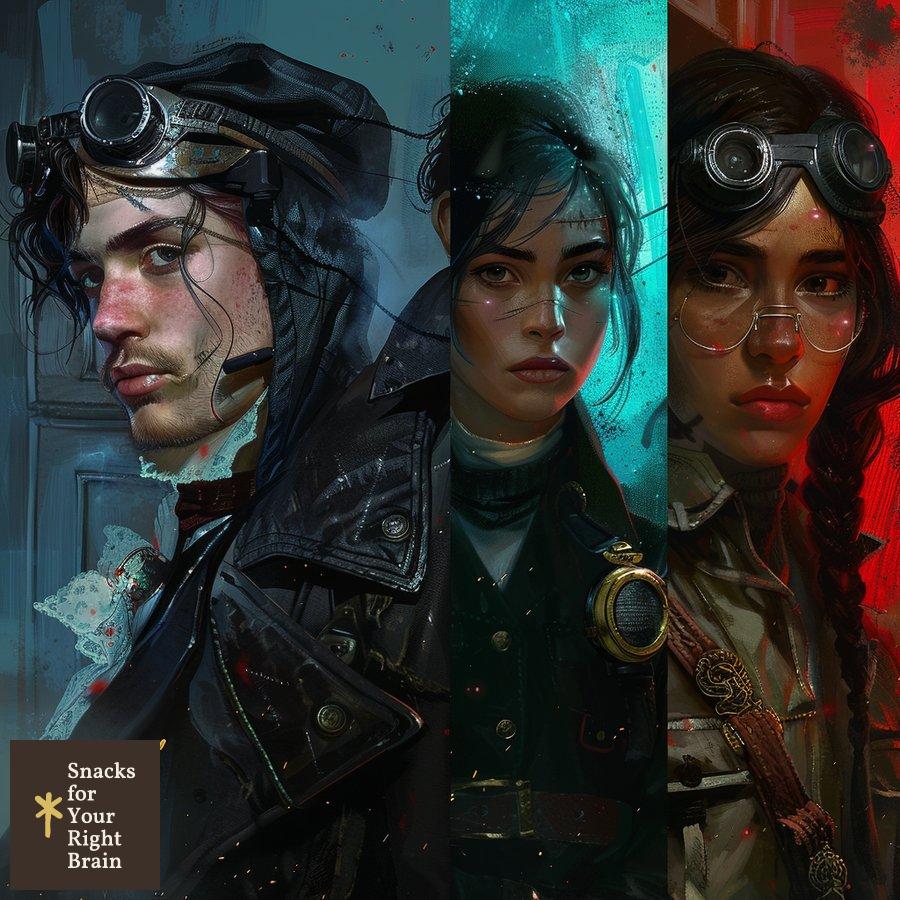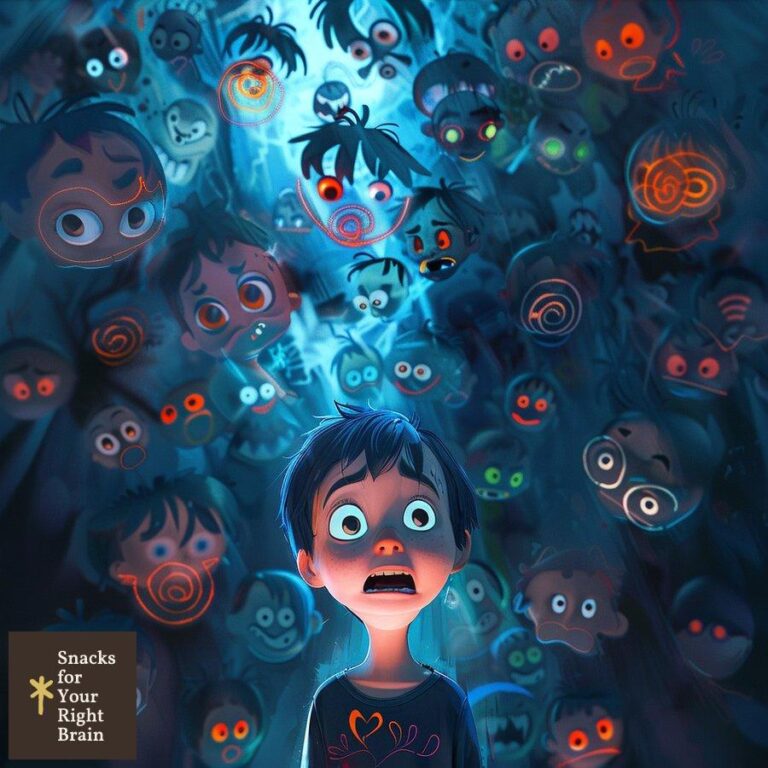What Is Character Subtext
What is Character Subtext?
Character subtext refers to the unspoken thoughts, feelings, and motivations that lie beneath a character’s surface actions and dialogue. It is the underlying current that shapes a character’s behavior and interactions, revealing their true nature to the reader. Subtext adds depth, complexity, and realism to characters, allowing writers to convey more than what is explicitly stated on the page.
Subtext is the unspoken language of storytelling, a powerful tool that enables writers to create multi-dimensional characters that resonate with readers on an emotional level. By mastering the art of subtext, writers can craft characters that are not merely one-dimensional archetypes, but fully realized individuals with their own unique quirks, desires, and inner conflicts.
How Does Character Subtext Differ from Explicit Text?

Explicit text is the straightforward, surface-level information that is directly stated in the story, such as dialogue, descriptions, and narrative exposition. It is the literal meaning of the words on the page. In contrast, character subtext is the underlying meaning that lies beneath the explicit text, the hidden layers of meaning that are conveyed through subtle cues and nuances.
While explicit text provides the basic facts and information necessary for the story to unfold, subtext adds depth, complexity, and emotional resonance to the narrative. It allows writers to convey a character’s true thoughts, feelings, and motivations, even if they are not openly expressed.
For example, consider the following dialogue:
“I’m fine,” she said, forcing a smile.
The explicit text here is simply that the character said “I’m fine” and smiled. However, the subtext suggests that the character is not actually fine, but is instead putting on a brave face and hiding her true emotions. The forced nature of her smile implies that she is struggling with something beneath the surface.
What Are the Main Types of Character Subtext?
There are several key types of character subtext that writers can use to create depth and complexity in their characters:
Emotional Subtext
Emotional subtext refers to the unspoken feelings and emotions that a character experiences, such as fear, anger, love, or guilt. It is the underlying emotional landscape that shapes a character’s behavior and decisions.

For example, a character who is afraid of commitment may avoid getting close to others, even if they don’t explicitly state their fear. Their emotional subtext is revealed through their actions and body language.
Motivational Subtext
Motivational subtext refers to the hidden desires, goals, and agendas that drive a character’s actions. It is the underlying reason why a character behaves the way they do, even if they don’t fully understand or articulate their own motivations.
For example, a character who is driven by a need for power and control may manipulate others to get what they want, even if they don’t openly admit to their ambition. Their motivational subtext is revealed through their choices and the consequences of their actions.
Relational Subtext
Relational subtext refers to the unspoken dynamics and power dynamics that exist between characters. It is the underlying tension, attraction, or conflict that shapes the relationships between characters, even if they don’t explicitly acknowledge it.
For example, a character who is intimidated by their boss may defer to them and avoid confrontation, even if they don’t openly admit to their feelings of inferiority. Their relational subtext is revealed through their interactions and body language.
Internal Conflict Subtext
Internal conflict subtext refers to the inner turmoil and contradictions that a character experiences within themselves. It is the underlying struggle between a character’s desires, beliefs, and values, even if they don’t fully understand or articulate their own inner conflicts.
For example, a character who is torn between their loyalty to their family and their desire for independence may feel conflicted and torn, even if they don’t openly express their inner turmoil. Their internal conflict subtext is revealed through their actions, dialogue, and inner thoughts.
How Do Body Language and Gestures Convey Subtext?
Body language and gestures are powerful tools for conveying character subtext. The way a character carries themselves, the subtle movements of their face and hands, and the overall physicality of their presence can reveal a wealth of unspoken information about their thoughts, feelings, and motivations.
Some common examples of how body language and gestures can convey subtext include:
- Crossed arms or closed-off body language can suggest defensiveness, insecurity, or discomfort.
- Fidgeting or nervous tics can reveal anxiety or discomfort.
- Avoiding eye contact can suggest dishonesty, shame, or a desire to hide something.
- Clenched fists or tense shoulders can reveal anger or frustration.
- Leaning in or open body language can suggest interest, attraction, or engagement.
By paying attention to the physical details of a character’s behavior, writers can create a rich tapestry of subtext that adds depth and complexity to their characters. A simple gesture or movement can convey volumes about a character’s inner world, without the need for explicit explanation.
What Role Does Dialogue Play in Creating Subtext?
Dialogue is a crucial element in creating character subtext. The words that characters choose to use, the way they say them, and the unspoken meanings that lie beneath the surface of their speech can reveal a wealth of information about their thoughts, feelings, and motivations.
Some ways that dialogue can convey subtext include:
- Subtext can be conveyed through the tone, inflection, and emphasis a character uses when speaking.
- Characters can use subtext to avoid directly addressing an issue or to hint at hidden meanings.
- Subtext can be revealed through the way characters respond to or avoid certain topics in conversation.
- Characters can use subtext to manipulate or mislead others, creating tension and conflict.
- Subtext can be used to establish power dynamics and social hierarchies between characters.
By carefully crafting the dialogue of their characters, writers can create a rich tapestry of subtext that adds depth and complexity to the story. The words that characters choose to use, and the way they choose to use them, can reveal a wealth of unspoken information about their inner lives and the relationships between them.
How Can a Character’s Actions Reveal Hidden Meanings?
A character’s actions can be a powerful tool for conveying subtext. The choices a character makes, the way they respond to challenges and obstacles, and the consequences of their behavior can all reveal hidden meanings and unspoken truths about their thoughts, feelings, and motivations.
Some ways that a character’s actions can reveal subtext include:
- A character’s actions can contradict or undermine their stated beliefs or intentions, revealing hidden agendas or inner conflicts.
- A character’s actions can have unintended consequences that reveal the subtext of their motivations or desires.
- A character’s actions can be influenced by their backstory, emotional landscape, or relational dynamics, revealing subtext about their past experiences and inner world.
- A character’s actions can be used to manipulate or mislead others, creating tension and conflict that reveals subtext about their true nature.
- A character’s actions can be used to establish or challenge power dynamics and social hierarchies, revealing subtext about their place in the world and their relationships with others.
By carefully crafting the actions and choices of their characters, writers can create a rich tapestry of subtext that adds depth and complexity to the story. The way a character behaves, and the consequences of their behavior, can reveal a wealth of unspoken information about their inner lives and the relationships between them.
Why Is Setting Important for Character Subtext?
Setting is an often-overlooked element in creating character subtext, but it can be a powerful tool for revealing hidden meanings and unspoken truths about a character’s inner world. The physical environment in which a story takes place, and the way characters interact with and respond to that environment, can reveal a wealth of information about their thoughts, feelings, and motivations.
Some ways that setting can convey subtext include:
- The physical environment can reflect or contrast with a character’s emotional state, revealing subtext about their inner world.
- The way a character interacts with or responds to their environment can reveal subtext about their personality, values, and experiences.
- The setting can be used to establish or challenge power dynamics and social hierarchies, revealing subtext about a character’s place in the world.
- The setting can be used to create tension, conflict, or obstacles that reveal subtext about a character’s inner strengths and weaknesses.
- The setting can be used to foreshadow or symbolize future events or character developments, revealing subtext about the story’s themes and direction.
By carefully crafting the setting of their stories, writers can create a rich tapestry of subtext that adds depth and complexity to their characters. The physical environment in which a story takes place, and the way characters interact with and respond to that environment, can reveal a wealth of unspoken information about their inner lives and the relationships between them.
How Can Backstory Enhance Character Subtext?
Backstory, or the events and experiences that have shaped a character’s life before the story begins, can be a powerful tool for creating character subtext. By understanding a character’s past, writers can reveal hidden meanings and unspoken truths about their thoughts, feelings, and motivations in the present.
Some ways that backstory can enhance subtext include:
- Backstory can reveal the origins of a character’s fears, desires, and inner conflicts, adding depth and complexity to their behavior in the present.
- Backstory can be used to foreshadow or symbolize future events or character developments, revealing subtext about the story’s themes and direction.
- Backstory can be used to establish or challenge power dynamics and social hierarchies, revealing subtext about a character’s place in the world and their relationships with others.
- Backstory can be used to create tension, conflict, or obstacles that reveal subtext about a character’s inner strengths and weaknesses.
- Backstory can be used to reveal hidden meanings and unspoken truths about a character’s personality, values, and experiences.
By carefully crafting the backstories of their characters, writers can create a rich tapestry of subtext that adds depth and complexity to their stories. The events and experiences that have shaped a character’s life before the story begins can reveal a wealth of unspoken information about their inner lives and the relationships between them.
What Is the Significance of Conflicting Desires in Subtext?
Conflicting desires, or the inner turmoil and contradictions that arise when a character’s wants and needs are in opposition, can be a powerful source of subtext. When a character is torn between two or more competing desires, it creates tension and conflict that reveals hidden meanings and unspoken truths about their thoughts, feelings, and motivations.
Some ways that conflicting desires can create subtext include:

- Conflicting desires can create inner turmoil and contradictions that reveal subtext about a character’s personality, values, and experiences.
- Conflicting desires can lead to choices and actions that have unintended consequences, revealing subtext about a character’s true nature and the complexity of their inner world.
- Conflicting desires can be used to create tension and conflict between characters, revealing subtext about their relationships and the power dynamics at play.
- Conflicting desires can be used to foreshadow or symbolize future events or character developments, revealing subtext about the story’s themes and direction.
- Conflicting desires can be used to reveal hidden meanings and unspoken truths about a character’s place in the world and their relationships with others.
By carefully crafting the conflicting desires of their characters, writers can create a rich tapestry of subtext that adds depth and complexity to their stories. The inner turmoil and contradictions that arise when a character’s wants and needs are in opposition can reveal a wealth of unspoken information about their inner lives and the relationships between them.
How Does Dramatic Irony Contribute to Character Subtext?
Dramatic irony, or the situation in which the audience or reader knows something that the characters do not, can be a powerful tool for creating character subtext. When the audience or reader is privy to information that the characters are unaware of, it creates a gap between what is known and what is said or done, revealing hidden meanings and unspoken truths about the characters’ thoughts, feelings, and motivations.
Some ways that dramatic irony can contribute to subtext include:
- Dramatic irony can create tension and conflict by revealing the gap between what the audience or reader knows and what the characters know, adding depth and complexity to the story.
- Dramatic irony can be used to foreshadow or symbolize future events or character developments, revealing subtext about the story’s themes and direction.
- Dramatic irony can be used to establish or challenge power dynamics and social hierarchies, revealing subtext about a character’s place in the world and their relationships with others.
- Dramatic irony can be used to reveal hidden meanings and unspoken truths about a character’s personality, values, and experiences.
- Dramatic irony can be used to create a sense of empathy or connection between the audience or reader and the characters, revealing subtext about the human experience.
By carefully crafting the dramatic irony of their stories, writers can create a rich tapestry of subtext that adds depth and complexity to their characters. The gap between what is known and what is said or done can reveal a wealth of unspoken information about the characters’ inner lives and the relationships between them.
What Literary Devices Can Deepen Character Subtext?
There are several literary devices that writers can use to deepen character subtext, adding layers of meaning and complexity to their stories. Some of these devices include:
Symbolism
Symbolism is the use of objects, images, or ideas to represent something else, often with deeper or more abstract meanings. Symbols can be used to reveal subtext about a character’s inner world, foreshadow future events, or represent larger themes and ideas.
Metaphor
Metaphor is the comparison of two unlike things without using “like” or “as.” Metaphors can be used to reveal subtext about a character’s personality, values, or experiences, or to create vivid and memorable images that add depth and complexity to the story.
Irony
Irony is the use of words to convey a meaning that is the opposite of their literal meaning. Irony can be used to create subtext about a character’s true nature, reveal hidden meanings and unspoken truths, or create tension and conflict.
Foreshadowing
Foreshadowing is the use of hints or clues to suggest future events or character developments. Foreshadowing can be used to create subtext about the story’s themes and direction, or to reveal hidden meanings and unspoken truths about the characters’ inner lives.
Allusion
Allusion is the indirect reference to a person, place, event, or literary work. Allusions can be used to create subtext about a character’s cultural or literary references, reveal hidden meanings and unspoken truths about their personality and experiences, or create a sense of depth and complexity in the story.
By carefully crafting these literary devices into their stories, writers can create a rich tapestry of subtext that adds depth and complexity to their characters. These devices can be used to reveal hidden meanings and unspoken truths, create tension and conflict, or foreshadow future events and character developments.
How Can Readers Identify Subtext in Literature?
Identifying subtext in literature requires close reading and attention to detail. Readers must look beyond the surface-level meaning of the words on the page and consider the underlying meanings and unspoken truths that lie beneath the surface. Some strategies for identifying subtext include:
- Pay attention to a character’s body language, gestures, and tone of voice, which can reveal subtext about their thoughts, feelings, and motivations.
- Look for contradictions or inconsistencies between what a character says and what they do, which can reveal subtext about their true nature.
- Consider the setting and how it reflects or contrasts with a character’s emotional state, which can reveal subtext about their inner world.
- Analyze a character’s backstory and how it shapes their behavior in the present, which can reveal subtext about their fears, desires, and inner conflicts.
- Look for literary devices like symbolism, metaphor, and irony, which can be used to create subtext and add depth and complexity to the story.
- Consider the larger themes and ideas of the story and how they relate to the characters’ inner lives and relationships, which can reveal subtext about the human experience.
By engaging in close reading and considering the various elements of the story, readers can uncover the rich tapestry of subtext that lies beneath the surface of the words on the page. Subtext adds depth and complexity to literature, revealing hidden meanings and unspoken truths about the human experience.
How Does Character Subtext Evolve Throughout a Story?
Character subtext is not static; it evolves and changes throughout the course of a story as characters grow, learn, and change in response to the events and challenges they face. As a character’s inner world shifts and transforms, so too does the subtext that reveals their thoughts, feelings, and motivations.
Some ways that character subtext can evolve throughout a story include:
- A character’s subtext can shift as they face new challenges and obstacles, revealing hidden strengths and weaknesses, fears and desires.
- A character’s subtext can change as they learn and grow, revealing new layers of complexity and depth to their personality and experiences.
- A character’s subtext can evolve as their relationships with other characters change, revealing new insights into the power dynamics and emotional connections at play.
- A character’s subtext can shift as they confront their own inner conflicts and contradictions, revealing new truths about their place in the world and their## How Does Character Subtext Evolve Throughout a Story? (Continued)
inner lives.
- A character’s subtext can develop in response to the themes of the story, as their experiences and choices reflect broader societal issues or personal dilemmas.
As characters navigate their journeys, the evolution of their subtext contributes to their growth and the overall narrative arc. This dynamic nature of subtext allows readers to engage more deeply with the characters, as they witness the complexities of human experience unfold in real-time.
What Are the Unique Aspects of Subtext in Different Genres?
Character subtext can manifest differently across various literary genres, each with its own conventions and expectations. Understanding these unique aspects can enhance a writer’s ability to effectively convey subtext.
Literary Fiction
In literary fiction, subtext often focuses on character development and emotional depth. The exploration of internal conflicts, relationships, and existential themes is paramount. Writers frequently employ nuanced dialogue and rich descriptions to convey the subtleties of human experience.

Mystery and Thriller
In mystery and thriller genres, subtext plays a crucial role in building suspense and tension. Characters may have hidden motives or secrets that are gradually revealed. The subtext often revolves around deception, trust, and the unraveling of truth, keeping readers engaged and guessing.
Romance
Romance novels heavily rely on subtext to convey the complexities of love and attraction. Characters may express their feelings indirectly, using body language, gestures, and unspoken emotions. The tension between desire and fear of vulnerability creates a rich subtext that enhances romantic tension.
Science Fiction and Fantasy
In science fiction and fantasy, subtext can be used to explore themes of identity, power, and societal structures. Characters may grapple with their roles in fantastical worlds, and subtext can reveal their internal struggles with morality, loyalty, and the consequences of their choices.
Historical Fiction
Historical fiction often employs subtext to highlight the cultural and societal norms of the time period. Characters’ actions and motivations may be influenced by historical events, and subtext can reveal the tension between personal desires and societal expectations.
By understanding the unique aspects of subtext in different genres, writers can tailor their approach to effectively convey hidden meanings and enhance character development.
How Can Writers Avoid Common Subtext Pitfalls?
Writers must be aware of potential pitfalls when crafting character subtext to ensure that it enhances rather than detracts from the narrative. Some common pitfalls include:
Overly Obvious Subtext
Subtext should be subtle and nuanced. If it is too obvious, it can feel heavy-handed and detract from the authenticity of the characters. Writers should aim for a balance between clarity and ambiguity, allowing readers to uncover the subtext through careful reading.
Inconsistent Subtext
Inconsistencies in character behavior or motivations can confuse readers. Writers should ensure that the subtext aligns with the established character traits and arcs. Any evolution in subtext should feel organic and justified by the character’s experiences.
Neglecting Context
Subtext must be grounded in the context of the story, including the setting, relationships, and plot. Writers should avoid introducing subtext that feels disconnected from the narrative. Contextualizing subtext within the larger framework of the story enhances its impact.
Lack of Depth
Subtext should add layers of meaning to characters and their interactions. Writers should avoid superficial subtext that lacks depth or complexity. Engaging with the characters’ inner lives and exploring their motivations can create richer subtext.
By being mindful of these pitfalls, writers can create compelling character subtext that enhances the overall narrative and resonates with readers.
What Strategies Can Improve Subtext During Revision?
Revision is a critical stage in the writing process, and it offers an opportunity to refine and enhance character subtext. Here are some strategies writers can employ during revision:
Analyze Character Motivations
Review each character’s motivations and desires. Ensure that their actions and dialogue align with their inner conflicts and goals. Strengthening the connection between explicit actions and underlying motivations can enhance subtext.
Evaluate Dialogue
Examine the dialogue for opportunities to incorporate subtext. Look for moments where characters can express their feelings indirectly or where their words can have multiple interpretations. Revising dialogue to include subtext can deepen character interactions.
Use Symbolism and Imagery
Incorporate symbolism and imagery to enrich subtext. Objects, settings, or recurring motifs can serve as powerful symbols that convey deeper meanings. Ensure that these elements are woven seamlessly into the narrative.
Consider Reader Perspective
Put yourself in the reader’s shoes. Consider how they might interpret the subtext and whether it aligns with your intentions. Revising with the reader’s perspective in mind can help clarify and strengthen the subtext.
Seek Feedback
Sharing your work with beta readers or writing groups can provide valuable insights. Feedback can reveal whether the intended subtext is effectively conveyed and whether readers are picking up on the nuances you intended.
By employing these strategies during revision, writers can refine their character subtext and enhance the overall impact of their stories.
How Does Character Subtext Impact Reader Engagement?
Character subtext plays a significant role in reader engagement. When readers can uncover hidden meanings and unspoken truths, it creates a sense of investment in the characters and their journeys. Here are some ways subtext enhances reader engagement:
Emotional Connection
Subtext allows readers to connect with characters on an emotional level. When readers perceive the complexities of a character’s inner world, it fosters empathy and understanding. This emotional connection encourages readers to become more invested in the character’s journey.
Active Participation
Subtext invites readers to actively engage with the narrative. When readers must interpret and analyze the underlying meanings, it creates a sense of participation in the story. This engagement can lead to a more immersive reading experience.
Heightened Tension
Subtext can create tension and suspense, keeping readers on the edge of their seats. When characters have hidden motives or unspoken conflicts, it heightens the stakes and encourages readers to anticipate the unfolding drama.
Thematic Depth
Subtext often ties into the larger themes of the story, enriching the narrative’s overall impact. When readers recognize how character subtext reflects broader societal issues or personal dilemmas, it deepens their understanding of the story’s significance.
By effectively utilizing character subtext, writers can enhance reader engagement and create a more compelling and immersive reading experience.
Why Is Subtext Crucial for Creating Realistic Characters?
Subtext is essential for crafting realistic characters because it mirrors the complexities of real human behavior. In life, people often communicate indirectly, hiding their true feelings and motivations beneath a veneer of politeness or social expectation. Here are some reasons why subtext is crucial for realism:
Complexity of Human Emotions
Humans are inherently complex, and subtext allows writers to capture the intricacies of emotions. Characters who express their feelings through subtext feel more authentic, as they reflect the nuanced ways people navigate their inner worlds.
Relatability
Readers can relate to characters who exhibit subtextual behavior. When characters grapple with conflicting desires, hidden fears, or unspoken truths, it resonates with readers’ own experiences. This relatability fosters a deeper connection between readers and characters.
Authenticity in Dialogue
Realistic dialogue often includes subtext, as people frequently communicate indirectly. Characters who speak in layers, using implications and hints, feel more genuine. This authenticity enhances the overall believability of the narrative.
Depth of Characterization
Subtext adds depth to characterization, allowing writers to explore the motivations and inner conflicts that drive a character’s actions. Characters with rich subtext are more multi-dimensional, making them feel like real individuals rather than flat archetypes.
By incorporating subtext into character development, writers can create realistic characters that resonate with readers and reflect the complexities of human experience.
How Does Character Subtext Reinforce Story Themes?
Character subtext plays a vital role in reinforcing the themes of a story. When subtext aligns with the overarching themes, it creates a cohesive narrative that resonates with readers. Here are some ways character subtext can reinforce story themes:
Symbolic Representation
Subtext can serve as a symbolic representation of the story’s themes. Characters’ hidden motivations or unspoken conflicts can mirror the larger issues at play, creating a deeper connection between individual experiences and broader societal themes.
Emotional Resonance
When character subtext aligns with the themes, it enhances emotional resonance. Readers are more likely to feel the weight of the themes when they see how they manifest in the characters’ lives. This emotional connection reinforces the significance of the themes.
Foreshadowing and Reflection
Subtext can foreshadow or reflect thematic developments throughout the story. As characters grapple with their inner conflicts, the subtext can hint at the larger thematic issues that will come to the forefront, creating a sense of cohesion and continuity.
Character Growth
Character subtext often reflects the growth and transformation of characters in relation to the themes. As characters confront their hidden motivations and desires, their journeys can mirror the thematic exploration of identity, morality, or societal issues.
By skillfully weaving character subtext into the narrative, writers can reinforce story themes and create a richer, more meaningful reading experience. This alignment between character subtext and themes enhances the overall impact of the story, leaving a lasting impression on readers.






